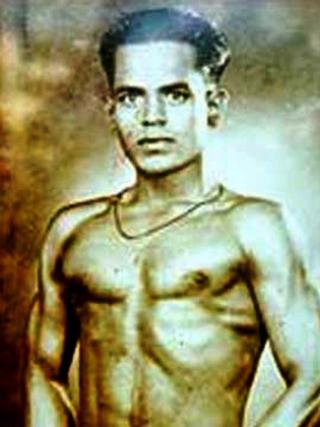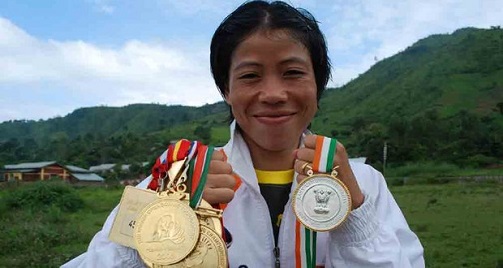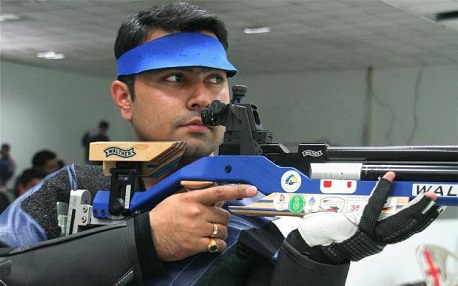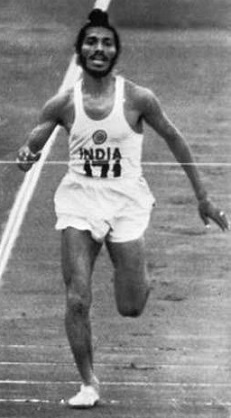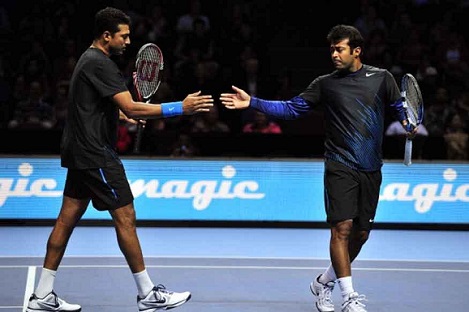The Olympics: India (1900-2016)
Note: Red links indicate that the page/ graphic is still under construction. Please click only blue hyperlinks.

Graphic: ‘‘The Times of India’’


Silver
This is a collection of articles archived for the excellence of their content. Readers will be able to edit existing articles and post new articles directly |
1900-2016: the solo medallists
Fifteen solo medallists, 17 medals
Norman Pritchard and Sushil Kumar won two medals each.

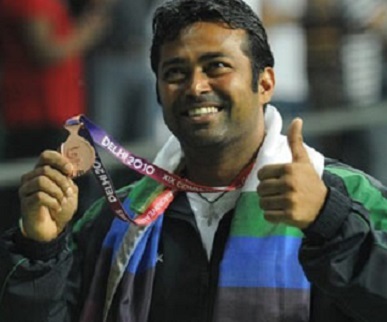


Gold.

Silver and bronze.
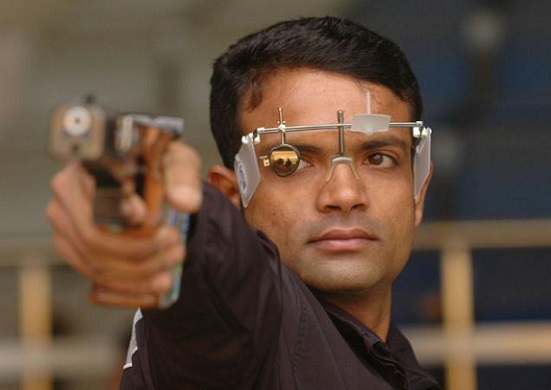
Silver

Graphic: ‘‘The Times of India’’
SPECTACULAR SOLOS
Prasanth Menon The Times of India Aug 01 2016
Individual Glory At The Olympics Has Come At A Premium For Indian Athletes.
Here, TOI Pays Tribute To 12 Medallists Who Defied The Odds to Climb The Podium
The names have been arranged in the chronological order. Within a year: gold first, silver next and bronze after that. Within a type of medal: in the alphabetical order of the second name.
NORMAN PRITCHARD, Silver—Athletics
Men's 200m (1900 Paris)
In the pre-independence era, Kolkata-born Norman Pritchard, competed in five races -60m, 100m, 110m hurdles, 200m and 200m hurdles -and reached the finals in 110m hurdles, 200m and 200m hurdles.Prithchard won silver in both 200m and 200m hurdles.
NORMAN PRITCHARD, Silver—Athletics
Men's 200m hurdles (1900 Paris)
Khashaba Dadasaheb Jadhav
Bronze-Wrestling
(1952 HELSINKI)
Born in a wrestlers' family, Khashaba Dadasaheb Jadhav overcame official apathy and financial crisis to grapple his way to independent India's first Olympic medal at Helsinki in 1952.Jadhav went to Finland banking on the generous contributions made by people of his native village, Goleshwar in Maharashtra, and the money provided by barrister Balasaheb Khardeka, the principal of his college, who mortgaged his home to send his ward to the Olympics. Shifting to the bantamweight category (57kg) from flyweight, Jadhav floored his opponents in the first five rounds. But then he ran into Ishii Shobachi, a sumo wrestler-turned freestyle grappler from Japan, and he got the better of Jadhav after a gruelling 15-minute fight. Rushed into his next bout against Soviet Union's Rashid Mammadbeyov, an exhausted Jadhav was tamed by Mammadbeyov and the Maharashtrian had to be content with bronze, a medal worth its weight in gold in Indian sporting history.
Leander Paes
Bronze--Tennis (1996 ATLANTA)
India had to wait for 44 years after Jadhav's brush with history to see an exuberant Leander Paes win a historic bronze. Going to Atlanta, Paes was ranked 127 in the world. But he toppled higher-ranked players from the first round to the quarterfinals to set up a semifinal showdown with Andre Agassi. Paes came within two points of winning the first set against the third seeded American but couldn't pull it off and eventually succumbed 6-7, 3-6. But, unlike the Slams, all was not lost.Paes had the opportunity to play the bronze medal match against Fernando Meligeni of Brazil. He didn't let the opportunity slip as he came back from a set down to beat the Brazilian 3-6, 6-2, 6-4.
Karnam Malleswari
BRONZE-WEIGHTLIFTING WOMEN'S 69 KG (2000 SYDNEY)
Coming from a humble background, Karnam Malleswari became the first Indian woman to win an Olympic medal when she claimed the bronze in Sydney. A two-time world champion, Malleswari increased her weight to compete in the women's 69 kg category, a decision which was vindicated when she lifted 110kg in snatch and 130 in clean and jerk (240kg) to finish third behind China's Lin Weining and Hungary's Erzsebet Markus. But despite grabbing a piece of history, Malleswari was distraught after the final result as she felt an error in calculation on the part of her coaches had robbed her of a certain gold medal. Lin had lifted 132.5 kg in clean and jerk in her last attempt and all Malleswari had to do was to match that effort to lift India's first gold medal. But Malleswari instead went for the jugular and attempted 137.5 kg, which she failed, and had to be content with a bronze.
Rajyavardhan Singh Rathore
SILVER—SHOOTING MEN'S DOUBLE TRAP (2004 ATHENS)
A soldier, who has been involved in combat operations against terrorists, Rajyavardhan Singh Rathore's experience of handling guns prompted him to turn to shooting in 1998. And it took the army marksman only six years in the sport to claim India's first-ever Olympic individual silver medal. On a windy day in Athens, Rathore didn't have the best of starts in the men's double trap event and qualified for the final after finishing fifth from three rounds in the preliminary stage. In the final round, Rathore shot 44 out of 50 to clinch the silver behind Sheikh Ahmed Al-Maktoum of UAE who claimed gold.
A profile
Abhinav Bindra (33)
Shooting, 10 metre air rifle
Qualified: May 2015, ISSF World Cup, Munich
Achievements: 7 CWG medals, 4 golds; 3 Asian Games medals
Previous Olympics: Gold, Beijing 2008
It's not hard being Abhinav Bindra. He lives in a sprawling farmhouse on the outskirts of Chandigarh. He has access to every imaginable luxury. And he also has an Olympic gold medal-the only one with an individual gold. But it's also not easy being him. To continuously feed the fire inside. To spend hour upon hour in the shooting range in his back garden. To slow down his heart, quieten his nerves, stop his muscles from flinching, exhale, and press the trigger. And to keep doing it day after day, because nothing else will feed his hunger.
Bindra heads to Rio 2016 as ready as he could be. There is a glint in his eyes that wasn't so pronounced earlier, and his dry humour surfaces more easily than ever before. He's been there, done that, failed, recovered, and failed again. He is going to the Olympics calling himself a "medal wannabe" but you get the sense that he has finally started enjoying the pain he has chosen to inflict upon himself by becoming an elite sportsman.
"Here, you try," Bindra says, handing his rifle soon after his final practice session in India. That's when you feel the weapon's weight, its proclivity to shake in your grasp, and how it wills you to lose concentration. You get the first shot off, then the second, and the third. By the fifth shot, the tiny target at the end of the hall is a blur. You eyes are popping out, and as you turn to Bindra, he smiles: "Welcome to my world!" He has to shoot 60 times just to qualify for the final, and can't afford a single shot outside the innermost ring, which is like a speck from that distance.
On his last day of training in India, before he left for Uzbekistan, on his way to Germany, and then onwards to Rio, Bindra shot a 634.6-better than the world record mark of 633.5 But it was in training, and so it means nothing. If Bindra can do it again in Rio, he will be India's greatest Olympic sportsman in history by a long distance. And if he doesn't? Perhaps by a shorter distance then. Yes, it's not hard being Abhinav Bindra. But it sure isn't easy.
GOLD SHOOTING
MEN'S 10M AIR RIFLE (2008 BEIJING)
Indians watching television in the morning hours of August 11, 2008, had goose bumps when they saw the national anthem being played out loud at the Olympic arena. On top of the podium stood a bemused bespectacled man gazing at the Indian tricolor. In his third Olympics, Abhinav Bindra had shot himself to the pinnacle of Indian sporting glory by gunning down an Olympic gold medal. Bindra had a staggered start in the men's 10m air rifle event and was fourth while qualifying for the final. But determined to bury the ghosts of Athens, the then 26-year-old shooter reserved his best for the final round.Bindra started with a 10.7 in the before following it up with shots of 10.3 and 10.4. He moved into the lead with a 10.6 in the seventh shot. But Heri Hakkinen of Finland caught up with him in the ninth shot and both the Indian and the Finnish shooter were tied at 689.7 going into the final shot.But Hakkinen cracked under pressure. He scored only 9.7 to settle for bronze behind China's Zhu Qinan. Bindra, though, proved he was made of sterner stuff. He hit a near perfect 10.8 in his last attempt to finish with an accumulated score of 700.5 to grab gold and send a billion Indians into ecstasy.
Sushil Kumar
BRONZE —WRESTLING (2008) BEIJING
Details below (under 2012)
Vijender Singh
BRONZE—BOXING MEN'S 75 KG (2008 BEIJING)
Nine days after Bindra's gold winning effort, a product of the Bhiwani Boxing Club in Haryana, Vijender Singh, brought more cheer to Indians by punching his way to a bronze. Having moved to the middleweight category by the time the Games had arrived, Vijender breezed past his opponents in the opening rounds to set up a date with Carlos Gongora of Ecuador in the quarterfinals. Vijender dominated the quarterfinal bout against the southpaw to emerge victorious 9-4. The victory assured him of a bronze medal as there was no playoff for third place in boxing. But his hopes of making the final were dashed by Cuban boxer Emilio Correa.
Sushil Kumar
SILVER—WRESTLING MEN'S 66KG FREESTYLE (2012 LONDON), BRONZE (2008) BEIJING
He may not be a part of the Rio-bound squad but Sushil Kumar has already etched his name in Indian sporting history. He is the only sportsman from the country to have won back to-back Olympic medals.
The stockily built lad from Baprola village, however, had a disappointing start in Beijing. He lost his opening bout to Andriy Stadnik. But the Ukranian stormed into the final which gave Sushil the opportunity to contest the repechage where he bounced back beating world number five Doug Schwab and Albert Batyrov in the first two rounds. In the bronze medal match, Sushil took on Leonid Spiridonov of Kazakhstan and the Indian wrestler overcame his far superior opponent in the extra 30-second period to clinch a bronze medal. But Sushil wasn't done yet. He returned to the Olympic mat four years later and went one better. Entering London as the reigning world champion in the 66kg freestyle category, Sushil began his quest for a second Olympic medal with a victory over reigning Olympic gold medallist Ramazan Sahin of Turkey. He got the better of Ikhtiyor Navruzov in the quarters before overpowering Akzhurek Tanatarov in the semifinals. But in the semifinal, he sustained a cut to his upper lip and wasn't at his best against Tatsuhiro Yonemitsu of Japan in the gold medal clash which saw him having to settle for silver.
Rewards
REWARDS: Rs 2 crore (Delhi govt), Rs 1.5 cr (Haryana govt), Rs 75 lakh (Railways), 3kg gold (Sahara), Rs 30 lakh (sports ministry). Land from Haryana govt for academy.
Vijay Kumar
SILVER—SHOOTING MEN'S 25M RAPID FIRE PISTOL (2012 LONDON)
Coming from the mountains in Himachal Pradesh, the subedar in the Indian army made up for his poor performance in 10m air pistol by winning a silver in the 25m rapid fire pistol event. Kumar overcame the likes of world champion Alexei Klimov of Russia and the Chinese duo of Ding Feng and Zhang Jian to finish behind gold medal winner Leuris Pupo of Cuba. He found the target 30 times out of 40 attempts in the eight-round series in which each shooter had five shots. Kumar got off to a perfect start hitting five out of five in the opening series. But he couldn't match that effort thereafter. However, he kept himself in the gold medal hunt going into the last series. But Pupo hit four on target in the final round while Kumar missed three targets and consequently became India's second silver medalist in shooting.
Rewards
The Army shooter competed in London without any expectations of a medal and returned home after bagging the silver in an exciting duel against Leuris Pupo of Cuba and Ding Feng of China, who settled for the bronze. Vijay's Olympic glory got him on par with Athens silver medallist Rajyavardhan Singh Rathore, with the Army promising to explore ways to make him a commissioned officer. The subsequent financial rewards ran into crores.
REWARDS: Rs 1 crore (HP govt), 3 kg gold (Sahara), 50 lakh (Rajasthan govt), Rs 30 lakh (sports ministry), 30 lakh (defence ministry), Rs 20 Lakh (NRAI).
Yogeshwar Dutt
SILVER—WRESTLING MEN'S 60 KG FREESTYLE (2012 LONDON)
The wrestler from Sonepat, Haryana made amends for his quarterfinal loss in Beijing by grabbing a bronze in the men's 60 kg freestyle competition in the English capital. However, he didn't start well in London as he lost the pre-quarterfinal bout to B Kudukhov. But like Sushil in Beijing, Yogeshwar pounced on the chance of contesting in the repechage rounds. He beat Franklin Gomez in the first repechage round followed by victory over Masoud Esmaeilpour in the next encounter which set up a bronze medal bout against North Korean Jong Myong Ri.Though the fancied North Korean won the first round 1-0, Yogeshwar came back strongly in the next to take the bout to a third and final round. With a pinpoint head and roll, he floored his opponent in 1.2 seconds to clinch the bronze medal. Rio now offers Yogeshwar a chance to join Sushil in becoming the second Indian wrestler to grab two Olympic medals.
The real surprise of the Games, Dutt repeated Sushil’s feat by grabbing bronze after climbing his way up through repechage. A year later the new hero of wrestling is nursing an injury that forced him out of the world championships.
Yogeshwar Dutt's bronze medal from the 2012 London Olympics was upgraded to silver in Aug 2016 after the Russian wrestler who had come in second was stripped of his medal for failing a dope test.
Rewards
REWARDS: Rs 1 crore and land (Haryana), Rs 50 lakh (Rajasthan), 2kg gold (Sahara), SUV (from PSU Bank), 20 lakh (sports min).
A Profile
Kunal Pradhan , Mat Demon “India Today” 1/8/2016
Wrestling, men's freestyle 65 kg
How he qualified: March 19, 2016, Astana
Achievements: 2 CWG golds, 1 Asian Games gold
Previous olympics: Bronze at London 2012
There is something obviously menacing about Yogeshwar Dutt and something oddly delicate. It's perhaps his broad shoulders, chiselled chest and ripped back not quite fitting in with his tiny waist. He's only 5 foot 7 inches, but he's easily the tallest Indian wrestler heading to Rio as the flag-bearer of the only individual sport in which the country has some sort of Olympic legacy.
Wrestling has been a way of life in India for centuries. The pehalwans who performed in royal courts were replaced in the modern era by exponents such as Chandgi Ram and Satpal Singh, who ran mud akhadas that preserved the old-world principles of the sport. Chandgi, who died in 2010, won a gold medal in the 1970 Asian Games and participated in Munich 1972, and Satpal, who still trains young aspirants at Delhi's Chhatrasal Stadium, travelled to Moscow 1980 before winning a gold in the 1982 Asian Games. The first Indian individual Olympic medal for India had also come in wrestling-Khashaba Dadasaheb Jadhav at Helsinki 1952-also the only one until tennis player Leander Paes broke the barren spell in Atlanta 44 years later.
Yogeshwar, therefore, has a history to protect, and the significance of wrestling to India's sporting destiny in this new Age of Revival is not lost on him. But, while he's mindful of how akhadas continue to serve as the ultimate nursery for fresh talent because of the discipline and the values they instil, Yogeshwar is under no illusions about what it takes to win an Olympic medal in a contemporary world.
"Have you seen Sultan?" he asks, almost without preamble at the Sports Authority of India centre in Sonepat during a training run. "A lot of it is simply rubbish," he says, dismissing theSalman Khan-starrer about an Indian wrestler that is breaking box-office records. "You can't train for the modern Olympics by tilling the land with oxen or carrying bricks up the stairs. You have to understand and respect the demands of the sport as it exists today. These methods from the 1940s won't work any longer."
Dutt, for example, belies his rustic background by training in a hypoxic chamber, where the altitude is simulated to 3,200 metres, to build stamina. He also alternates between cardio and weights in a regimen prepared by his trainers as he gets back in top physical shape after a 2015 that was spoiled by a spate of injuries, on the back of another injury-hit 2013. In between, just when the doubts had started to creep in, he won gold in the Incheon Asian Games in 2014 to rekindle the Olympic fire.
"When I won bronze at London, I felt empty-as if nothing had happened. People came and congratulated me, they pointed to the medal, but it somehow meant nothing. Who knows what will happen in Rio, but I always wanted gold," he says.
As he's training on the mat in the Sonepat wrestling hall, which is named after him and another double Olympic medallist Sushil Kumar, with veer ras poetry blaring from his phone as the background score, you catch Yogeshwar stealing occasional glances at an iconic photograph pinned on the wall. In it, he's on the Olympic podium in London, kissing the medal. His right eye is swollen to a point where you can't even see it under the folds of inflamed skin.
"On the mat, when you look into the eyes of your opponent, you know instantly whether or not you can take him," Dutt says, breaking the reverie. "I want the others to look into my eyes this time and see that I've come to win."
Mary Kom
BRONZE—BOXING WOMEN'S FLYWEIGHT (2012 LONDON)
See also Mary Kom, the film
Women's boxing made its debut in the London games and MC Mary Kom was India's lone woman representative in the ring. The five time world boxing champion ensured a medal from London by grabbing a bronze in the women's flyweight category.Switching over to the 51kg category to enable her to compete in London, Mary Kom polished off Karolina Michalczuk of Poland 19-14 in her opening bout. A day later she brushed aside the challenge from Maroua Rahali of Tunisia to seal her spot in the semifinal, also assuring India of a bronze medal.However, Mary's endeavour to turn bronze into something bigger was doused by her nemesis Nicola Adams, as the Brit proved too good with a 11-6 win in the semifinal bout.
With women's boxing making its debut, London was the first opportunity for the multiple world champ to enter the Olympic ring. The Manipur girl had to endure anxious moments before she got a wild card for London. ‘Magnificent Mary’ didn't disappoint, claiming bronze. Mary and her husband Onler have toured the whole of country many times since, being guests of honour at functions. Mary, a mother of three, is now awaiting the release of her Bollywood biopic.
Rewards
REWARDS: Rs 50 lakh and two acres of land (Manipur), Rs 50 lakh (Rajasthan), 2kg gold (Sahara), Rs 40 lakh (north eastern council), Rs 20 lakh (Assam), 20 lakh (sports min).
Gagan Narang
BRONZE—SHOOTING MEN'S 10M AIR RIFLE (2012 LONDON)
Gagan Narang became the toast of the country after winning eight gold medals across the 2006 and 2010 Commonwealth Games in Melbourne and Delhi respectively. With Bindra failing to follow up on his Beijing success, the onus was on Gagan to deliver. And he gave India's its first medal in London by securing a bronze in men's 10m air rifle event. He finished with a total score of 701.1 behind Niccolo Campriani of Italy (701.5) and gold medal winner Alin George Moldoveanu of Romania (702.1). Though he had qualified for the men's 50m rifle three position event too in London, Gagan couldn't make it to
The Hyderabad-based shooter won India's second consecutive medal in the event after defending champion Abhinav Bindra crashed out in the first round. It was a brilliant show from Narang as he battled back from the crushing disappointment of missing out in 2008. The ace shooter is now in great demand for motivational lectures across boardrooms
Rewards
REWARDS: Rs 1 cr (Haryana govt), 50 lakh (Rajasthan govt), 2kg gold (Sahara), 20 lakh (sports min), 15 lakh (NRAI)
Saina Nehwal
BRONZE-BADMINTON WOMEN'S SINGLES (2012 LONDON)
Luck played a part in Saina's maiden Olympic medal as her opponent in the bronze medal playoff, Xin Wang from China, pulled out midway through the match due to a knee injury. But Saina certainly deserved that stroke of luck as she had been the flagbearer of Indian women's badminton for a good few years. A total of five Indian shuttlers managed to qualify for London 2012 but barring Saina, none progressed beyond the last-eight stage. The Hyderabadi shuttler steamrolled her opponents in the group phase and marched into the semifinals. But she failed to rise to the expectations and went down to China's Wang Yihan 13-21, 13-21. Though she became the first Indian shuttler to win a bronze medal in London, a more-experienced Saina would be hoping to add a golden feather to her cap in Rio.
Gagan Narang and Sania Mirza's city mate Saina went into the Games as among the strong medal contenders. She lived up to her billing, delivering a medal, though it came with a bit of luck as rival Wang Xin retired hurt in the bronze medal match. A year later, the high-flying Indian rose to No. 2 in world rankings.
Rewards
REWARDS: Rs 1 cr (Haryana), Rs 50 lakh (Rajasthan), 2kg gold (Sahara), Rs 25 lakh (BAI), 20 lakh (sports min), honorary doctorate from Mangalayatan University.
Sakshi Malik

The Times of India’s point is that India is stingy during training, but splurges after medals have been won.
At the Rio Olympics in 2016, Sakshi Malik became the first female wrestler from India to claim an Olympic medal, a bronze in women's 58kg freestyle wrestling. She also became the fourth female medallist at the Summer Games for India after weightlifter Karnam Malleshwari (2000), boxer MC Mary Kom (2012) and shuttler Saina Nehwal (2012).
REWARDS: See graphic on this page.
PV Sindhu
2016: PV Sindhu became the first shuttler from India to make it to the final of the badminton singles event,the first female sportsperson to reach the top 2 in any sport at the Olympics, the first Indian woman to win a silver medal, and the fifth Indian to win a silver medal
REWARDS:
Telangana government: Rs.5 crore
Andhra Pradesh government: Rs.3 crore
Delhi government: Rs.2 crore
BPCL: Rs.75 lakh
Madhya Pradesh government: Rs.50 lakh
BAI: Rs.50 lakh
AIFF: Rs.5 lakh
Total, including other, smaller prizes, more than Rs.12 crore, and counting...
The Central Reserve Police Force (CRPF), the country's largest paramilitary force, made PV Sindhu its `brand ambassador' and also give her the honorary rank of commandant in the force, equivalent to the position of a superintendent of police (SP) and such an officer commands a battalion of about 1,000 personnel, when posted in field operations. (The Times of India)
Sindhu then signed a three-year deal with sports management company Baseline that could be worth up to Rs 50 crore, the highest ever for any non-cricket player. (The Times of India)
Narrowly missing a medal
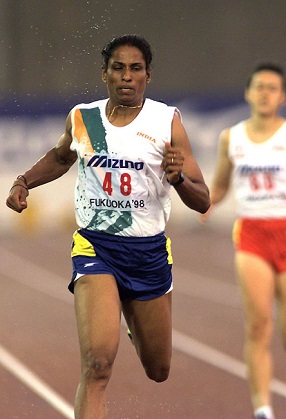
Photo: STF, YOSHIKATSU TSUNO
The Times of India Maxin Mathew
(See also Athletics: India)
PT Usha
(400M WOMEN'S HURDLES FINAL | 1984 LOS ANGELES)
The women's 400m hurdles was making its Olympic debut and given the form that PT Usha was in, India was confident of its first athletics medal at the Games. The feisty Kerala athlete had defeated American star Judi Brown in the semifinals, becoming the first Indian woman to reach the final of an Olympic event.In the final at the Los Angeles Memorial Coliseum, Usha began perfectly but the race was halted after a false start by Australian Debbie Flintoff-King. The restart, however, affected Usha's concentration and the 20-year-old got off her blocks slower than earlier.Trailing initially, Usha picked up pace and by the eighth hurdle, was back in contention for a podium finish. However, two hurdles later, Brown overtook her to seal the silver and with Usha failing to bend her body at the finish line, Romania's Cristina Cojocaru Romania's Cristina Cojocaru beat her to the bronze medal by 1100th of a second. Such was the dramatic photo-finish, that even the announcer handed the third place to Usha briefly, before correcting the decision in Cojocaru's favour.
Milkha Singh
(400m men's final | 1960 Rome)
Milkha Singh was in the form of his life in the run-up to the Games, having won 77 of the 80 races he had run.Competing in the 200m event would have guaranteed a medal for the gutsy sprinter but `The Flying Sikh' opted to race in his favourite 400m instead.Having done impressively in the heats, Milkha shot off the blocks in the final, maintaining a steady second position.But in the final 200m stretch at Rome's Olympic Stadium, he surprisingly slowed down, altering his pace to enable his competitors to overtake him.Milkha finished fourth with a timing of 45.6 seconds, a national record that stood for 38 years.
Indian Men's Hockey
(2000 Sydney)
See also Hockey: India
Having finished a disappointing eighth at the 1996 Atlanta Games, India were determined for a better show at Sydney. Under the leadership of Ramandeep Singh, the Indian squad featuring Dhanraj Pillay, Mukesh Kumar, Baljeet Singh Saini and Mohammad Riaz had the country's finest players primed to restore hockey's lost glory.India defeated Argentina and Spain, held the Aussies to a 2-2 draw before suffering a shock defeat to Korea. Needing just a win against minnows Poland to advance to the semifinals and guarantee themselves a medal, India took the lead through Dilip Tirkey and chose to adopt a defensive approach instead of going for the kill.The strategy backfired in the final minute of the match when Poland found the equalizer and the sight of Pillay leaving the field in tears remains a poignant memory. India finished tied with Korea but the latter advanced based on a better headto-head record. In the classification round, India lost to Great Britain before defeating Argentina to finish seventh out of the 12 teams.
Women's Hockey
(1980 Moscow)
Women's hockey was introduced in Moscow at an Olympics marred with massive boycotts over Russia's invasion in Afghanistan. The Indian women, lacking match practice and proper preparation, began well with wins over Poland and Austria. But a loss to Czechoslovakia and a draw against eventual champions Zimbabwe hit their campaign hard.Needing a draw against Soviet Union to seal at least the bronze in their name, nerves got the better of the Indian team and they lost 1-3 to finish fourth.
See also Women's hockey: India
Paes, Bhupathi
Leander Paes & Mahesh Bhupathi (Men's doubles tennis | 2004 Athens)
Two years before the Athens extravaganza, Paes and Bhupathi split for the second time in three years. After a lot of clamour from fans and former players, the duo decided to reunite a month before the Games. Many doubted the pair's capability, but Paes and Bhupathi silenced them all by winning the Canada Masters on their comeback, just weeks before the Games. Seeded fifth in Athens, the `Indian Express' looked set for a medal after defeating heavyweight pairings such as Mardy Fish-Andy Roddick and Yves Allegro-Roger Federer en route to the semis. But in the last-four clash, the favourites, who had not dropped a set till then, suffered a straight sets defeat to Germans Nicholas Kiefer and Rainer Schuttler. The bronze medal showdown against Croatians Mario Ancic and Ivan Ljubicic too went against Paes and Bhupathi, the Indian pair suffering a 6-7, 6-4, 14-16 defeat in a four-hour marathon encounter.
Henry Rebello
(Triple jump, 1948 London)
Henry booked his ticket to London with a national record jump of 50ft, 2in at the 1948 All-India meet in Lucknow, making him a sureshot contender for an Olympic medal. However, the young 19-year-old Bengalurean ruptured his right hamstring muscle in his first jump at the Games and was stretchered off, his Olympic dreams dashed.
Satyadev Prasad
(Archery | 2004 Athens)
Prasad gave India a glimmer of hope when he battled windy conditions to become the first archer to enter the prequarters. Defeating higher-ranked Japan's Yuji Hamano and Dutchman Ron van der Hoff, Prasad was up against top seed and world record holder South Korean Im Dong-Hyun. The UP lad faltered in the final round, losing the match by an agonizing two points.
Wrestling
KD Mangave (1952, Helsinki) had to settle for fourth in the freestyle featherweight category after losing to American Josiah Henson in the fifth round. Twenty-four years later, freestyle wrestlers Sudesh Kumar (52kg) and Prem Nath (57 kg) finished fourth at the Munich Games.
See also Wrestling: India
Boxing
Gurcharan Singh was on the cusp of winning India a medal at the Sydney Olympics, leading by a point in the quarterfinals of his heavyweight bout against Ukrainian Andriy Fedchuk. However, he failed to evade a punch from Fedchuk in the dying seconds to end the bout tied 12-12. The judges ruled the bout 60-42 (number of punches landed) in favour of the Ukrainian, leaving Gurcharan distraught in the ring.
See also Boxing: India
Shooting
Finishing seventh in the qualification round of the men's 50m rifle prone event, Joydeep Karmakar had his eyes set on a medal during the 2012 London Games. He came agonizingly close before losing out on the bronze by 1.9 points to finish fourth.
See also Shooting: India
Still without a medal
Apurvi Chandela
Suhani Singh , Young Gun “India Today “ 1/8/2016
Apurvi Chandela (23)
Shooting, 10M air rifle event
How she qualified: First Indian female shooter to win a place at Rio after bronze at 2015 ISSF World Cup
Achievements: 2014 Commonwealth Games gold medallist; won Swedish Grand Prix in January 2016 with a world record score of 211.2
There is a quiet determination to Apurvi Chandela. The first-time Olympian was just 15 when she saw an interview of Abhinav Bindra after he had shot his way into the history books at Beijing 2008, an event, she says, that inspired her to take up the sport. Her father, Jaipur-based restaurateur Kuldeep Singh Chandela, took the football- and cricket-loving girl to a shooting range where she tried her hand at both the rifle and pistol. Like Bindra, she'd make the rifle her weapon of choice. After only two weeks in the sport, she participated in a state competition and won a bronze. Soon Kuldeep would gift her a rifle. Later, her uncle, Hem Singh, built a shooting range at his home in Hanuman Nagar, Jaipur, for her to train. Eight years later, she is representing India in the same event as her idol, who she now refers to as "Abhinav bhaiyya".
"She has a fantastic temperament for a concentration-driven sport," says Viren Rasquinha of Olympic Gold Quest. "She is calm and focused and likes to train on her own. She's quite shy and likes to be by herself." Apurvi's mother Bindu accompanies her to all tournaments. "With so much travelling, she needs someone with whom she can talk to and vent," says Kuldeep, whose wife was in Serbia with their daughter at the time of the interview.
When in India, when she isn't in Gurgaon, where she lives, or Faridabad, where she trains with coach Stanislav Lapidus, she lets her hair down in Jaipur. Here she loves to play with her three dogs, hang out with her close friends. She runs, meditates and swims (her father has got a pool made at home). She also occasionally indulges in desserts from her elder sister's patisserie, Dzurt-one of the small luxuries of being a rifle shooter rather than playing a more physically demanding sport.
For the Olympics, Chandela will bank on the resilience that helped her overcome a ligament tear in the ankle to win gold in Glasgow in 2014. "She knows how to handle pressure," says Rasquinha, himself a former national hockey captain. "My advice to her was to enjoy the experience and not be overwhelmed by the pressure, and to focus on things within her control." Chandela will be at ease since her family will be in Rio rooting for her. Says Kuldeep Singh Chandela: "I tell her, keep on doing good karma and don't think about the results." Easier said than done.
Deepika Kumari
Suhani Singh , Straight Arrow “India Today” 1/8/2016
Deepika Kumari (22)
Archery, Recurve, individual and team event
How she qualified: 2015 World Archery Championships
Achievements: Two-time CWG gold medallist
If Saina Nehwal has the Chinese to contend with, Deepika Kumari has the South Koreans. At Rio 2016, gone will be the Bagazimuri (a Korean brand) chest guard which Kumari is often spotted wearing at international competitions. Instead, high on Kumari's mind will be thoughts of becoming the country's first Olympic medallist in the recurve event. She is better prepared than she was in London in 2012, when as an 18-year-old first-timer she was unable to cope with the wind at Lord's, or nerves. The stakes, four years later, are higher-Kumari is today the most feted of India's four-member archery contingent. This time around, it's not a tense teenager but an assured young woman who steps on to the field. Former India hockey captain Viren Rasquinha believes the last Games made her stronger. "There were unrealistic expectations in London. The same mistakes will not be repeated," he says. Meditation along with yoga has been an integral part of Kumari's six-hour daily training regimen for the past few years. Apart from working on the mental aspect, Kumari is also stronger physically. Over the last year-and-a-half, she has built up her upper body fitness and muscle mass so as increase bow poundage. "It gives her more stability," says Rasquinha, whose Olympic Gold Quest organised a physical conditioning camp for the archer. "Very few women athletes do it."
The daughter of an autorickshaw driver and nurse who grew up in a thatched hut in Ratu Chatti, a village 10 km away from Ranchi, Deepika has come a long way from her childhood days when she aimed for ripe yellow mangoes with her handmade bow and arrow. Already a Padma Shri recipient, Deepika comes to Rio with a ranking of 15, eager to make the most of her two chances at getting a medal (she will combine with Bombayla Devi and Laxmirani Majhi in the team recurve event).
Shiva Thapa
Kaushik Deka , Lord of the rings “India Today “ 1/8/2016
Shiva Thapa (22)
Boxing
How he qualified: Finished second in the Asia Oceania Olympic qualifiers in Qian'an, China, in April
Achievements: Bronze at 2015 World Championship, Doha
At the modest, 10 x 10 gym of the Ramada hotel in Gurgaon, a lithe presence practises shadow boxing, the only sound that of his gloves as they cut the air. Oblivious to the attention he has been drawing-a boxer is not a common sight in this upscale hotel-he continues till his father gently asks him to stop; reminding him that it is time for breakfast.
Breakfast was just an excuse, his father knew that Shiva, India's biggest Olympic medal hope in boxing, needed to relax. The young boxer has been upset because two commercial shoots in the last two days wasted a lot of his training time, much more than he had expected. But this is not the first time his father has been dealing with Shiva's disappointment.
For the last 15 years, Padam Thapa, 54, a former karate instructor and now owner of a factory manufacturing steel almirahs in Guwahati, has been the primary driving force in Shiva's long and arduous journey-from the SAI training centre near his home to the Olympic ring. It's been a rigorous routine, father and son wake up at 3 in the morning, cycle to the SAI centre, carrying nuts and sprouts as breakfast, return home at 6 to catch school at 7; post-school, go for training again, followed by maths tuition and finally return home at 9 pm.
"I was always interested in body contact sports but never got enough opportunities to train. I wanted to send my children to the Olympics and that's why I married early at 17," says Padam. Shiva, the youngest among his four children, finally fulfilled his dream. Shiva's elder brother Govind is also a state-level boxer.
The dream lay shattered in 2012 when Shiva was knocked out in the first round at the London Olympics. He wants to make the most of the second chance he has earned after four years. "My strength is that I don't fight recklessly, which is also seen as a weakness. I'm working on blending my style, a calculated fight with adequate aggression," says Shiva, sipping a glass of lime juice.
The new-found aggression was what helped him in defeating World Championship bronze medallist Keirat Yeraliev of Kazakhstan in the Olympics qualifier. It was not an easy bout as during the trials he had got a cut above his left eye. The injury needed stitches because of which he couldn't take part in sparring sessions for fear that the cut might open up again. The recollection of that bout pumps up the otherwise soft-spoken Thapa. "I did not care about his reputation. He was between my Olympic dream and me. I had to destroy him."
Thapa is different from the Bhiwani Boys who put Indian boxing on the world map-with Jitender Kumar and Akhil Kumar making it to the quarterfinals, and Vijender Singh winning a historic first bronze for India in the ring-both in style and in pedigree. He credits his quick feet to hours of practising the "bamboo dance" with his sister at home and his ability to unleash knock-out punches when the chips are down to the tenacity he picked up from watching Mike Tyson's bouts as a kid. "In fact, I took up boxing after I saw Tyson's fights. I was just awestruck by his charisma and the way he made boxing look so stylish," Shiva says. And he recently had another brush with international boxing royalty when his left hook was noticed by Manny Pacquiao, regarded as one of the greats of all time and a world champion across eight divisions over a glittering two-decade-long career.
"Knowing that Manny had praised me during the Worlds is just the confidence booster I needed before Rio," he says. But Shiva's Olympic dream no longer remains his own. With cricketer Sachin Tendulkar and the Sultan of Bollywood, Salman Khan, as his cheerleaders, Thapa knows that his journey must end only on the medal podium.
Medals won: By population and GDP
The Times of India, Mar 02 2016



The Times of India

[Indpaedia’s note: While India’s performance has been very bad, it is nowhere near being the worst in the world, as the above text suggests. Till 2016, 73 countries had never won an Olympic medal. These include Bangladesh, which is the world's eighth most populous country, Myanmar and several major countries.];
From: November 4, 2018: The Times of India
The country's 1.2 billion-plus population should be an advantage. It's $2 trillion economy should put it among the lords of the rings. Yet, we bring up the rear at the Games every four years. Why? Our sports budget converts into Rs 8 per Indian!
India's status as a perpetual under performer in Olympic sports is an issue that has led to much hand wringing over the years, and with good reason.
One could argue that a country of 1.2 billion people should be throwing up lots of talented sportspersons and hence be a serious contender for global honours.The truth is that seen in terms of the number of medals won for every million people, India was the worst among all the nations at the London Olympics of 2012. While the two silver and four bronze medals won that year represented the country's best ever showing at the Games, it still amounted to less than 0.01 medals for every million people, barely better than the many nations that won nothing.
If you are among those who believe it is not sheer population size but economic might that counts, you would still be hard put to account for India's performance or lack of it. Once again, with 4.4 medal points (a gold equals three points, a silver two and a bronze one) per trillion dollars of gross domestic product, India was one of the four worst performers among those that won at least one medal.Of course, that's better than the many who won nothing, but again only just.
We looked also at how today's top medal winners had performed when their economy was of roughly the same size as India's now is, that is about $2 trillion. There are nine other countries whose GDP has crossed this mark at some point or the other. We looked at how they fared in the Olympic Games closest to the year in which they achieved their GDP milestone. As the chart shows, every one of them performed much better than India did in 2012.
The inescapable conclusion is that as a thumb rule, for an Indian sportsperson to do well he or she must excel inspite of the system. Cricket is perhaps the best illustration of the point, with the state having no role in running the sport. But even outside of cricket, the examples of Vishwanathan Anand, Leander Paes, Mahesh Bhupati and Sania Mirza or of Saina Nehwal, Pankaj Advani and Anirban Lahiri prove the point. These are some of India's most accom plished sports stars and they have come up through their own hard work and the sup port of sponsors they have been able to manage, not through state support.
With governments spending little on cre ating sporting infra structure and facili ties for mass partici pation in sports across the length and breadth of this vast country, it is not a situation that is likely to change very much very soon.
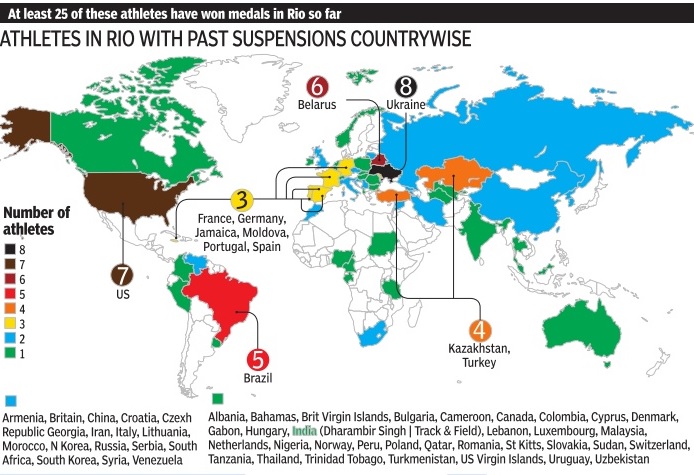
(Not) hosting the Olympics

…and why it could
From: Dipak Dash, December 3, 2018: The Times of India
See graphic:
Why India has never hosted the Olympics
…and why it could
B
HIGHLIGHTS OF INDIVIDUAL OLYMPIC GAMES
Antwerp Games, 1920: Funding
Sources:
1. From the archives of The Times of India: 2008: Ronojoy Sen
2. Book: The India Story by Boria Majumdar and Nalin Mehta
Tata’s Olympic safari
There is hardly anyone who hasn’t heard of Jamshedji Tata. But few remember his elder son Dorab. To this Tata goes the credit of starting the Olympic movement in India. Dorab Tata was mostly educated in England and his interest in sport was a result of his Western upbringing.
In the 1880s and ’90s, Dorab Tata was active in organising school and college cricket in Bombay. He then became involved with the Deccan Gymkhana where he was nominated president. The committee, which ran the Gymkhana, was not conversant with the details of managing athletic meets on European lines and wanted to develop their sports programme more in line with established Indian traditions.
At the first athletic meet the Gymkhana organised, Dorab Tata discovered that the competitors were “all boys of the peasant class working in the fields and living off poor fare”. Naturally they had no idea of European rules or modern training of any kind. Dorab Tata found that the competitors were proposing to run their 100-yard heats round a bend without strings. This was because their sports ground was very small and the track was part of a rough unrolled grass field.
Othe r popul a r events included the long distance race of about 25 miles. The peasants who participated were used to running barefoot on hard macadamised or dirt roads. Despite their lack of training and primitive conditions, the first three or four men ran the distance in good time. Dorab Tata felt that their time compared well with those in Europe or elsewhere. In 1919, some of their times were close to the times clocked in the Olympics.
Suitably impressed, the Tata scion decided to send three of the runners, at his own expense, to the Antwerp Games of 1920. Later he wrote a letter to IOC president Count Baillet Latour explaining his motives: “I therefore offered to arrange for the sending of three of the best runners to Antwerp to run the Olympic marathon at the next meeting, when I hoped that with proper training and food under English trainers and coaches they might do credit to India.”
Ultimately six or seven athletes from India proceeded to Antwerp with Dorab Tata bearing a bulk of the cost, which was estimated to be Rs 35,000. Dorab, however, only visited Antwerp briefly. Suffering from poor health, he could not find time to see the Games or meet the Indian contingent.
Thus began India’s eventful Olympic journey.
1936
Refusal to perform the Hitler salute
Boria Majumdar | Sports And Politics Do Mix | The Times of India

From: Team TOI Plus, July 12, 2021: The Times of India

From: Team TOI Plus, July 12, 2021: The Times of India
India has had its share of political moments in sport. The standout will surely be the refusal to perform the Hitler salute in front of the German chancellor at the opening ceremony of the 1936 Games.
Though the Berlin Games were ultimately to be remembered for the exploits of black American athlete Jesse Owens, whose triumph disproved Nazi theories of Aryan superiority, the Indian decision not to salute Hitler was also a grand gesture of defiance – in sync with the dominant stream of Indian nationalism at the time. The Indians were the only contingent – apart from the Americans – not to perform the raised arm salute as a mark of respect for the tyrannical German chancellor.
At a time when Britain was courting Hitler with its policy of appeasement – just two years later its prime minister, Neville Chamberlain, was to triumphantly declare “peace for our time” after the Munich conference – the Indian decision not to salute the fuhrer stemmed ideologically from the anti-Nazi posture taken by Gandhi and Nehru. From the 1920s, India had repeatedly expressed opposition to Britain in the event of a European war but regarded Fascism and Nazism as forms of Western imperialism.
Malkhamb and the ‘Hitler medals’
Sharmila Ganesan, July 11, 2021: The Times of India
Dhyan Chand, the hockey legend who had reportedly played without shoes during the second half of India’s historic final against Germany at the 1936 Berlin Olympicswasn’t the only barefooted athlete to bring home a gold medal that year. An army of pheta-sporting Maharashtrian and Gujarati men, who had marched behind the British-flag-carrying official Indian Olympic contingent with a curious saffron flag bearing symbols like the tricolour, an upward arrow and a star, returned from the Games with two special gold medals, one of which is known locally as the ‘Hitler Medal’.
By balancing themselves atop a malkhamb pole, squatting for rounds of kho-kho, chanting ‘hu tu tu’ in kabaddi and contorting into yoga asanas, 24 sportsmen from Amravati’s Hanuman Vyayam Prasarak Mandal, set up in 1914, won an Olympic medal with the Nazi symbol of an eagle clutching a swastika. It was their prize for standing second in “physical culture display” at the World Pedagogic Congress, where nations showcased their indigenous sports.
B
Sharmila Ganesan, July 11, 2021: The Times of India

From: Sharmila Ganesan, July 11, 2021: The Times of India
Among the Mumbaikars in the Indian contingent that ended up winning a medal at the first-of-its-kind International Sports Pedagogic Congress during the Berlin Olympics in 1936 were Vile Parle’s Nagindas Mehta and Premji Rajoda, G G Rajderkar, S V Kher and a strapping, 21-year-old sports teacher from Parel named Dattaram Lad aka ‘Lad Master’.
The idea of the first-of-its-kind congress, where various nations showcased their indigenous sports, was born from a friendship between Amravati’s Hanuman Vyayam Prasarak Mandal stalwart L J Kokardekar, who had been studying in Berlin in the 1930s, and Carl Diem, chief organiser of the 1936 Olympic Games, said mandal director Suresh Deshpande.
In a letter to Kokardekar, S D Sondhi, secretary of the fledgling Indian Olympic Association, wrote: “I am taking steps to send your gymnasts’ names (sic) for the Sports Pedagogic Congress where only, according to Diem, your gymnasts can give displays.”
This largely crowdfunded trip to Berlin saw the athletes sailing in an Italian ship called 'Kamteverde' to Venice, bonding with Chinese sportsmen and taking a train to Germany. According to a TOI article, the opening ceremony of the Games saw the earthy team singing Rabindranath Tagore’s ‘Ekla Chalo Re’. A barley-based health drink called Biomalt was favoured by Austria, which stood first in physical culture display, while “curry, meats including mutton, veal, lamb and fowl but no beef, pork or beef suet” formed the special dietary requests of India’s contingents that year, as per a sports portal.
When photos of the desi flexers led by Yavatmal physician Dr S K Kane dotted German newspapers the day after their demonstrations, an intrigued Adolf Hitler invited the pehelwans for an interaction, recalls Kane’s 89-year-old son Padmakar. The Nazi leader had presented his father with a special medal, a certificate with his signature and a question that Kane would repeat on cue for the rest of his life. “Does your team represent the average Indian?” Hitler had apparently asked Kane, referring to the brigade whose spines had been proclaimed by an official as “the most perfect” after examination.
When every participating nation’s national anthem was played during an event in Berlin, the official Indian team stood up for the British national anthem ‘God save the queen’ but the desi army didn’t, says Kane’s son Padmakar. “My father was a nationalist by temperament. He told his team to remain seated through it,” recalls Padmakar, adding that when a German minister probed them, the musclemen said that they considered ‘Vande Mataram’ to be their national anthem. “The minister asked them for a recording. That’s how ‘Vande Mataram’ came to be played at the official banquet,” says Padmakar, adding that his father had come in contact with Bengal’s Yugantar, a secret revolutionary party that had started under the guise of a fitness club, while studying medicine in Bengal.
HVPM’s website makes no secret of the mandal’s own nationalism-doused mythology. Founded by the Vaidya brothers, Anant and Ambadas, who wanted to link physical education with the Independence movement, the mandal boasted many freedom fighters, including Shivaram Raj-guru who studied here in 1926-27. Mahatma Gandhi and Sub-has Chandra Bose visited the mandal twice. In fact, Dr S G Patwardhan, the mandal’s then president, “could not go to Berlin in 1936 as he was denied a passport for political reasons”, says Deshpande.
Lad’s Pune-based grandson Somdutt said: “After marriage, he would often leave home at night saying he had some work. My grandmother found out he was a freedom fighter when Veer Savarkar visited him one day in the 1940s… He was killed before Independence in January 1947.” His grandmother Snehlata, an archer and sports teacher, was severely scarred by the loss. “When my father, a black belt in judo, got an offer to train in Japan, she didn’t allow him to go,” says Somdutt. “She didn’t want to lose any more people.”
Today, only time-worn pictures and stories remain of the contingent and the mandal has taken to calling the Olympic gold medal, which sits safe in its Amravati office, the ‘Hitler medal’.
2016, Rio: Results beyond the two medals…
…Or The true significance of India’s performance
NALIN MEHTA, Aug 21 2016 : The Times of India-IT'S ALL POLITICS - No rona about Rio. India's done better than you think
First, Indian sport has significantly increased its width in Rio, with several Indian athletes for the first time appearing among the top 10-20 in disciplines we have not had a presence in for decades. Dipa Karmakar's awe-inspiring Produnova and her fourth place in the vault event, and Lalita Babar's creditable 10th finish in the steeplechase can only be appreciated if we remember that no Indian woman has reached the finals of an Olympics athletics event since P T Usha in 1984 -and that was in a field curtailed by the Soviet boycott.
This has happened despite no visible increase in sporting facilities. Karmakar's physio was not allowed to accompany her to Rio and flown in only when she qualified for the finals, athlete Dutee Chand flew the 36 hours to Rio economy class while sports officials flew business class, and rower Dattu Bhokalan from drought-hit Talegaon who reached the quarter-finals in sculls says he'd “never seen so much water“ in his life till he joined the Army in 2012.
As sports writer Deepak Narayan points out, in Beijing in 2008 three Indian athletes reached the medal rounds and all three won medals.
In London, 11 made it to medal rounds and six won medals.
In Rio, though only seven reached a medal round (not counting men's wrestling), three fell just short of bronze -Abhinav Bindra, Dipa Karmakar, and Sania Mirza with Rohan Bopanna.
Third, Olympic medals are a consequence not of population but access to facilities. Sports minister Vijay Goel told the Rajya Sabha on July 26, 2016 that his ministry spent Rs 49.2 crore ($7.3 million) on India's Rio athletes (including Rs 25 crore under Target Olympics Podium (TOP) scheme), apart from another 49.2 million ($7.1 million) spent on 67 sports federations since 2012.
This is nothing compared to the £350 million spent for Rio 2016 by the UK which has gone from an Olympics also-ran to No. 2 position, $340 million by Australia or $139 million by Canada.
For 118 athletes to qualify for Rio in so many new disciplines and to make inroads despite a terrible system is evidence that something new is happening in Indian sport.
Women pioneers
In 1952 independent India sent its first women's representatives to the Olympics in Nilima Ghosh (100m and 80m hurdles) and Mary D'Souza (100m and 200m); Dolly Nazir (100m freestyle and 200m breaststroke) and Arati Saha (200m breaststroke).
C: Rewards for the medal winners
2012, 2016: Rewards
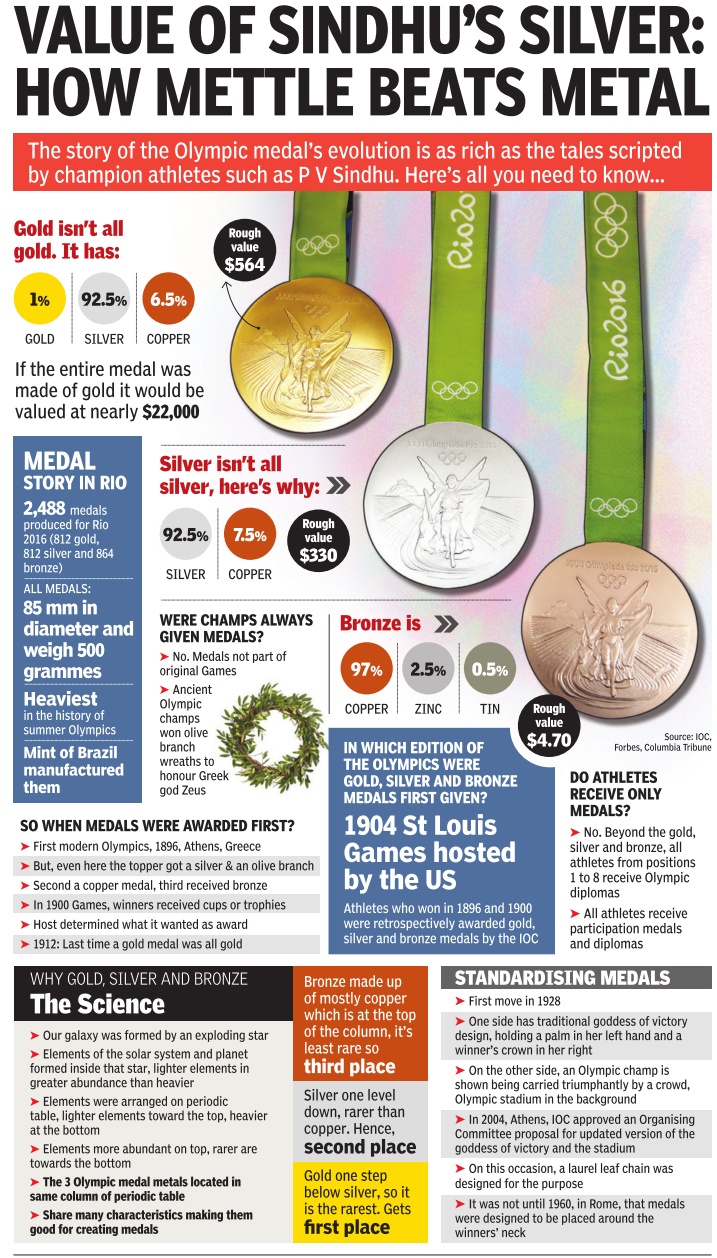
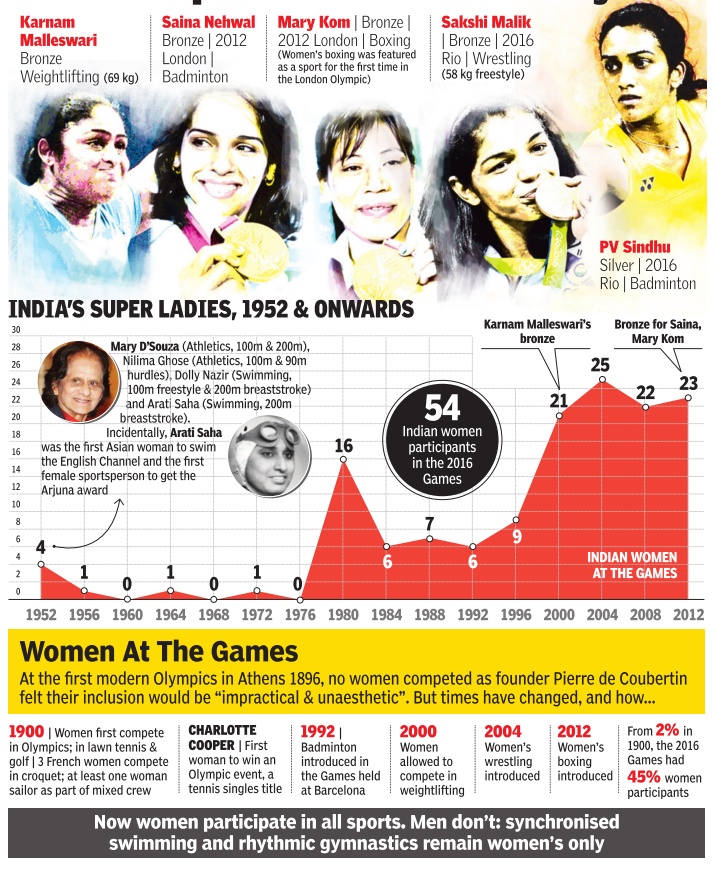
(See also the individual entries above)
'Rewards from the private sector
INDIA’S LONDON CHAMPS: ONE YEAR LATER
THE DIMINISHING BRAND
Lukewarm Response From India Inc
Olympic Medallists Rue Lukewarm Response From India In c Biju Babu Cyriac | TNN
The Times of India 2013/08/07
While the Olympic medallists have got decent monetary rewards, mostly from the government sector, many endorsement offers were supposed to come their way as top corporates showed interest. But a year later, they did not materialize, and at least the Andhra Pradesh government is yet to hand over promised land and awards of Rs 50 lakh each to Narang and Saina Nehwal.
For some, a job promotion hasn’t happened while some await promised financial rewards. The euphoria following India’s improved performance in London — where the country won two silver medals and four bronze — may have lasted for months but it wasn’t enough to convince corporate to make a move away from the cricketers.
Although several offers were made, most of them fell through at the negotiation stage. “Even in the case of Saina Nehwal, most of her endorsement offers came before the Olympics. She hasn't got any big deals for winning the bronze medal in London. Maybe Mary Kom, bronze winner in women’s boxing, has got one or two offers but in all these cases the figures quoted may not be true. Even if they have signed for free, they will quote a high figure to float the brand,” sources told TOI.
Dismayed at the turn of events, athletes are now wondering whether India's corporates will ever come around to promoting Olympic sports.
IOA goes back on promise
The Indian Olympic Association (IOA) has gone back on its promise that money raised through sponsors for the London Games would go only to athletes. The association has now decided that all the officials who travelled to London too deserve princely sums!
“The IOA raised a total of Rs 3.25 crores from five companies in sponsorship money and then-president VK Malhotra had promised that all the money will go only to the 83 athletes (approx 3.92 lakh each) who represented India. But they have not done that as IOA officials decided to grant an allowance of Rs 50,000 to coaches and support staff. This meant athletes who toiled got much less than promised,” sources said.
2021
Abhimanyu Mathur, August 29, 2021: The Times of India

From: Abhimanyu Mathur, August 29, 2021: The Times of India
Days after Neeraj Chopra’s historic gold medal at the Tokyo Olympics, news reports claimed he was the second-most marketable athlete in the country, behind only Virat Kohli. His soaring popularity on social media (he added 3 million Instagram followers in a week after the Olympics) and stronger public profile meant not many doubted this claim. An Olympic medal has been a rarity for India for almost half a century. Winning one is always a cause of national celebration and turns the medallist into an overnight star. Due to India’s super showing at Tokyo 2020 (this was India’s best-ever performance at the Olympics) and huge public interest in the Games, the medallists are already celebs. And their newfound celeb status is attracting huge brand interest and guaranteeing them windfall through meatier endorsement deals.
SOCIAL MEDIA HAS TURNED TOKYO MEDALLISTS INTO INSTANT CELEBS
At this Olympics, the process of athletes turning into celebs has been hastened by social media. Neeraj Chopra’s combined social media following on Twitter and Instagram grew from just over two lakhs to 42 lakhs. Saikhom Mirabai Chanu had 90,000 Instagram followers before the Games. The number currently stands at 8.6 lakhs. It’s not as if social media wasn’t present during earlier Olympics but experts say that now the influencer culture has caught on in sports too, and turned celebs out of achievers much quicker. Neerav Tomar, CEO and Managing Director, IOS Sports, says, “This is not the first Olympics with social media. But the influencer aspect of social media has become prevalent only in the last few years, and we are seeing that impact on the Olympic stars this time around. They are celebs and their growing social media followings are proof of that. That increased visibility is very important.” Neerav has been handling the business affairs of the likes of Vijender Singh, Mary Kom and Manika Batra as well as Tokyo medallists Lovlina Borgohain and Saikhom Mirabai Chanu.
Neeraj Chopra, gold medallist in javelin throw
No other athlete has captured the brands’ attention quite like Neeraj Chopra. Experts say it’s largely because of the scale of his achievement and his unique positioning in the market as an icon right now. Mustafa Ghouse, CEO, JSW Sports, says, “For someone like Neeraj, there is a ten-fold rise in terms of marketing power and brand value. That’s because of his unique positioning – as a male, non-cricketing achiever. So far, the majority of our marketable athletes have been either top cricketers or female stars like Mary Kom, PV Sindhu, Sania Mirza. Neeraj breaks that clutter. That’s what makes him so lucrative for brands.” Mustafa’s firm represents Neeraj as well as Bajrang Punia apart from several other Olympians.
RISE IN INSTAGRAM FOLLOWERS OF THE TOKYO MEDALLISTS
Neeraj Chopra: 133,000 to 3,700,000
PV Sindhu: 1,800,000 to 2,600,000
Mirabai Chanu: 90,000 to 858,000
Bajrang Punia: 249,000 to 461,000
Ravi Dahiya: 25,000 to 165,000
Lovlina Borgohain: 20,000 to 146,000
PR Sreejesh: 30,000 to 125,000
Manpreet Singh: 29,000 to 82,300
See also
The Olympics: India (1900-2016)

